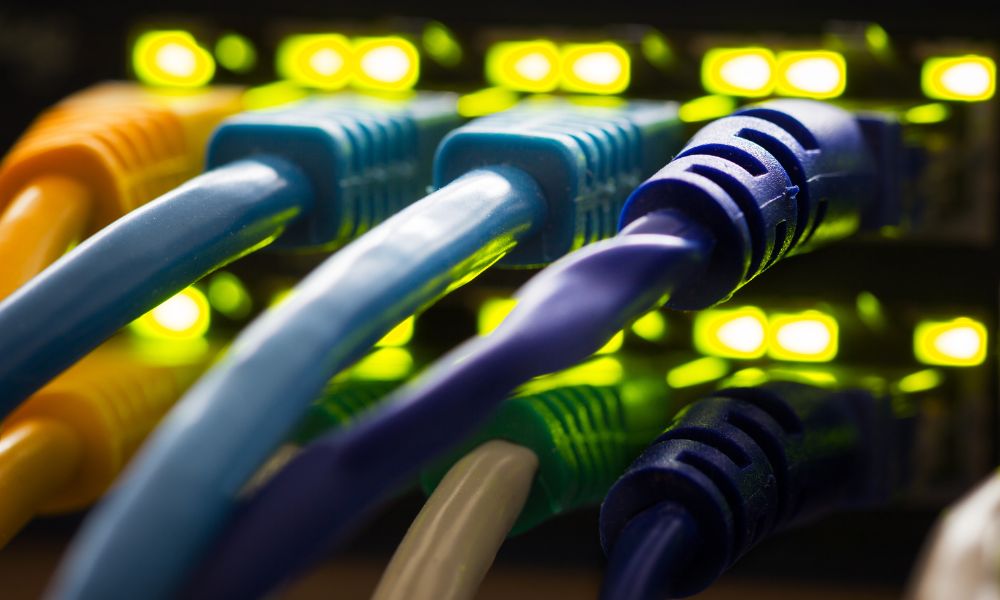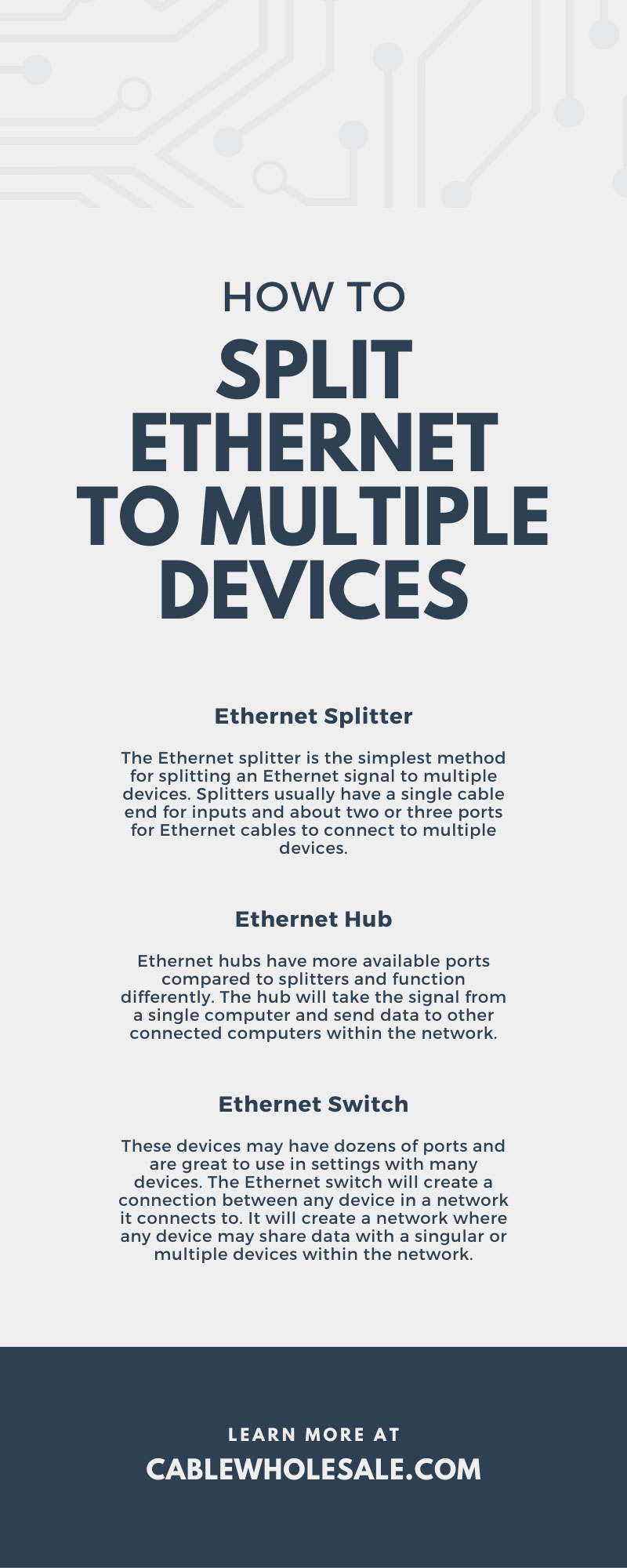
Many people and organizations use Ethernet to create a network for their computers and other devices. Splitting the Ethernet signal between various devices will make setting up easier and allow different data capabilities. You can use certain methods to split Ethernet and supply signals to multiple devices for your networking needs.
The Benefits of Splitting Ethernet Connections
A single Ethernet connection will cause great connectivity for a device, and when that signal becomes split between devices, they will all benefit from a powerful signal. Many companies with various devices that require an internet connection or need to connect a device will split Ethernet signals.
A split signal is more efficient than a singular signal connecting one source to multiple devices. Companies save money on technology for multiple singular signals when they may divide one signal into multiple for the devices they use.
Effectiveness
Sometimes, splitting Ethernet into multiple devices is an effective networking method. There are a few specific cases where splitting may cause issues, such as a network with too many devices to connect or a limit to how much connection speed is possible. The effectiveness of splitting the Ethernet will depend on your setup. How many devices do you connect to? You will need the discretion to determine what you will need to perform an effective split of the connection.
Will Split a Cable Slow Down Connection Speed?
In most cases, your connection speed won’t slow down when split. Splitting an Ethernet signal doesn’t split the connection’s speed; rather, it opens up a separate channel to another device. There are some cases where the speed may be hindered by certain factors, as you’ll soon read, but most of the time, you will have the same speed you would normally have with a single connection.
Methods for Splitting Ethernet
There are various ways to split Ethernet, and they all involve different devices. These devices will take a single signal and split or distribute it to other devices to create a network.
These devices will have multiple ports where cables will plug in and act as outputs to the single cable that acts as an input for the incoming signal. Like all technology, these devices have benefits and downsides that may hinder proficiency in splitting a signal.
Ethernet Splitter
The Ethernet splitter is the simplest method for splitting an Ethernet signal to multiple devices. Splitters usually have a single cable end for inputs and about two or three ports for Ethernet cables to connect to multiple devices.
The signal from the source will split between the devices connected via the ports and create an Ethernet connection for multiple devices simultaneously. These devices don’t have as much length as the cables that connect to them and will have a close distance to the Ethernet source.
Pros and Cons
The simple setup of the Ethernet splitter makes splitting a connection easy with just the plugging in of a few cables. These devices work well for networks with only two or three pieces of technology needing connection, such as homes or small offices. However, the speed of Ethernet splitter is limited to 100Mbps when the signal splits, which may hinder the effectiveness of some Ethernet cables with faster speeds, such as a Cat6 or Cat5e.
The splitter may not be the best choice for situations where high-speed internet is necessary for all connected devices and may have better situational functions. The short length may become an inconvenience if you have the networked devices spread out and their Ethernet cables won’t reach the splitter.
Ethernet Hub
Ethernet hubs have more available ports compared to splitters and function differently. The hub will take the signal from a single computer and send data to other connected computers within the network. An Ethernet hub may have anywhere from 4 to 12 ports for output and one port for input. Many use these devices for offices or other areas with multiple PCs in a single location.
Pros and Cons
You can take the data from one computer and transfer it to multiple computers at once, making it easy for people to join their computers to the network and access the same data as others. Like the splitter, the Ethernet hub involves simple setup and use, with the only requirement being an Ethernet cable for each device.
The hub is great for splitting the connection to multiple devices and typically has a faster speed than the splitter. However, the hub uses half-duplex communication, which won’t allow computers to send and receive data simultaneously. This stalling in data communication may result in a slower connection speed because the data functions will only occur singularly.
Ethernet Switch
These devices may have dozens of ports and are great to use in settings with many devices. The Ethernet switch will create a connection between any device in a network it connects to. It will create a network where any device may share data with a singular or multiple devices within the network.
Groups in technological businesses use Ethernet switches for server rooms and data centers; some people utilize them in LAN parties when numerous devices are needed. The switch requires one server or computer for input while the other devices will plug into the output ports.
Pros and Cons
The Ethernet switch is a multipurpose device that will benefit multiple people, whether they are in a home office setting or a large call center. You won’t encounter issues splitting the internet connection and decreasing speed with an Ethernet switch. The switch’s slowest speed will transfer data depending on the slowest device in the network, so it helps to have the fastest connection-based devices when connected to the switch.
You could also connect to a different device, such as a security camera with coaxial cable connectors; you will only need a coaxial to Ethernet adapter. If you encounter a connection problem, it may be difficult to find the culprit since so many devices are connected at once. You may encounter some issues as far as traffic when using multiple devices that transfer a lot of data, so you may want to take precautions in running programs one at a time.
Splitting an Ethernet connection will create more opportunities for networking devices. Using these methods will split your connection so you can send and receive data in various scenarios and improve your network further.




